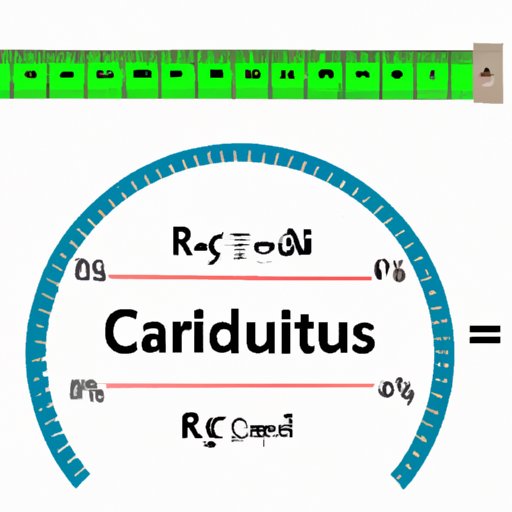Introduction
Finding the radius of a circle can be a daunting task for beginners. However, it is an essential skill for anyone who enjoys math, geometry, or science. Calculating the radius may be required in many real-life situations, from designing pools and gardens to measuring car wheels or tires. This article aims to provide a comprehensive guide on how to find the radius from circumference. Whether you are a student, a professional, or a hobbyist, you can benefit from reading this article.
Explaining the Formula
The mathematical formula for finding the radius from circumference is C=2πr, where C is the circumference and r is the radius. This formula indicates that the circumference of a circle is equal to twice the product of pi (π) and the radius. To solve for the radius, we need to rearrange the formula as follows:
r=C/2π
In other words, we divide the circumference by two times pi to find the radius.
Step-by-Step Instructions
To use the formula, we must first measure the circumference of a circular object accurately. We can do this by wrapping a measuring tape around the object’s circumference and noting the measurement. It is essential to ensure that the tape is snug but not too tight, as this could affect the accuracy of the measurement.
Once we have the circumference, we can use the formula to calculate the radius. Here are the step-by-step instructions:
- Measure the circumference of the circle using a measuring tape.
- Divide the circumference by 2π to find the radius.
- Round the result to the nearest whole number or decimal place, depending on your instructions or level of precision.
Visual Demonstration
Calculating the radius from circumference is easier to understand with a visual demonstration. Here is an image that shows how to measure the circumference of an object and use the formula to calculate the radius:

As you can see, the measuring tape represents the circumference of the circular object, while the formula shows how to calculate the radius.
Real-World Examples
It is helpful to understand how to find the radius from circumference in real-world situations. Here are some common examples that illustrate how to use this formula:
Swimming Pools
To determine the size of the pool you need, or the amount of water it takes to fill the pool, you’ll need to ascertain its volume, which includes determining the radius. Here’s how to do that:
- Measure the circumference of the pool using a measuring tape.
- Divide the circumference by two times pi to find the radius.
- Use the formula for the volume of a sphere (V=4/3πr^3) to calculate the volume of the pool.
Car Tires and Wheels
When replacing car tires or wheels, understanding their size is essential. Here’s how to do it:
- Measure the circumference of the tire or wheel using a measuring tape.
- Divide the circumference by two times pi to find the radius.
- Multiply the radius by two to find the diameter, which is often the standard unit of measurement for car tires or wheels.
Use of Online Calculators
If you don’t wish to do manual calculations, there are several online calculators available. Here are a few options:
To use these calculators, simply enter the circumference value, and the calculator will display the corresponding radius value. However, note that it is always essential to understand the manual calculation procedure and verify the calculator’s results for accuracy.
Conclusion
Finding the radius from circumference is a critical skill for anyone interested in geometry, math, or science. This guide offers step-by-step instructions, visual demonstrations, and real-world examples to help you learn how to find the radius from circumference. We also introduced some helpful online calculators and discussed their advantages and disadvantages. By following this guide, you can confidently calculate the radius of circular objects and apply this knowledge to different scenarios.
